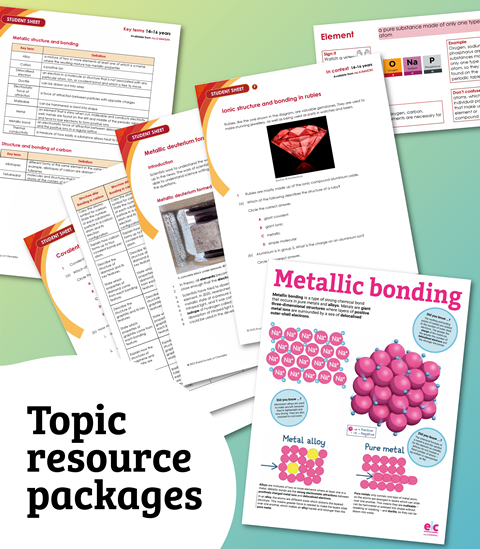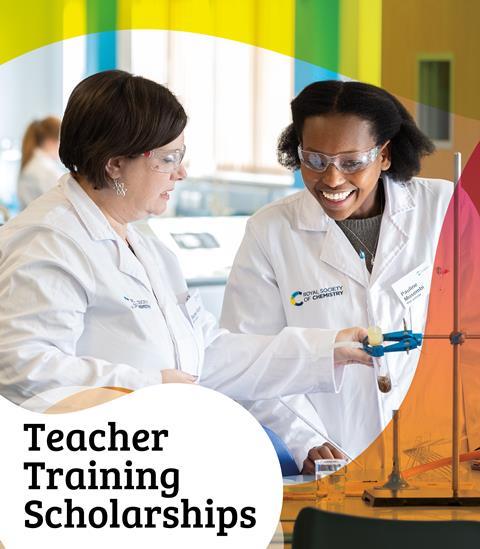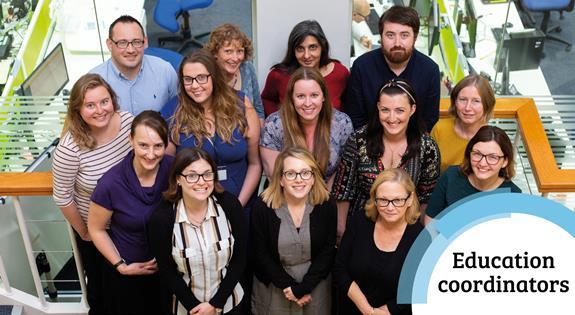All Group work articles – Page 6
-
 Resource
ResourceRecycling plastics
Video exploring the differences between thermosetting, thermosoftening and partially biodegradable plastics
-
 Resource
ResourcePlastics and polymers
Plastics are all made in a similar way, but can be manipulated to have very different functions. Discover how their properties are determined.
-
 Resource
ResourceHydrocarbons factpack
An introduction to hydrocarbons. Learn how unreactive alkanes can be made into reactive alkenes.
-
 Resource
ResourcePollutant detection and remediation
Case-study involving the development of adsorption and photocatalysis experiments to study the removal of a pollutant from waste-water. This resource and its components are licensed under a Creative Commons Attribution-NonCommercial-ShareAlike 3.0 Unported License.
-
 Resource
ResourceFractional distillation
Learn how the industrial process of fractional distillation transforms crude oil into a variety of products, from plane fuel to road surfacing.
-
 Resource
ResourceEsters and Perfumes
Esters occur in nature and have been harnessed by the perfume industry. What are esters and how are they made and used?
-
 Feature
FeatureForensic students are getting their hands dirty
Practical research projects are vital in the training of the next generation of forensic scientists, explains Matthew Almond
-
 Resource
ResourceModelling igneous rocks
This activity is designed for students aged 11-14, to support work on the formation of rocks and on igneous activity.
-
 Lesson plan
Lesson planDetermining the structure of compounds | 16–18 years
Examine data relating to the structure and complexity of compounds, including mass, infrared and 1H NMR spectra
-
 Lesson plan
Lesson planHow do scientists grow protein crystals? | 14-16 years
Discover the methods and conditions used by chemical scientists to grow protein crystals in this lesson plan with activities for 14–16 year olds.
-
 Lesson plan
Lesson planHow was the first artificial dye made? | 16-18 years
Explore organic synthesis and the making of the first artificial dye, mauve, in a lesson plan and directed activity related to text (DART) for 16–18 year olds.
-
 Lesson plan
Lesson planAlternative fuels and low-carbon technology in cars | 16-18 years
Explore how cars can be fuelled using low-carbon technology, including hydrogen and hybrid power, in this lesson plan with activities for 16–18 year olds.
-
 Lesson plan
Lesson planReacting iron and sulfur to explore compounds | 11-14 years
Investigate the reaction between iron and sulfur and practise modelling chemical changes in this lesson plan with activities for 11–14 year olds.
-
 Lesson plan
Lesson planRules for naming hydrocarbons: alkanes to arenes | 16-18 years
Review the rules for naming hydrocarbon structures, including alkanes, alkenes, alkynes and arenes, using this lesson plan with activities for 16–18 year olds.
-
 Lesson plan
Lesson planNucleophilic substitution reaction mechanisms | 16-18 years
Help your students explore the mechanism for an organic nucleophilic substitution reaction using this lesson plan with activities for 16–18 year olds.
-
 Lesson plan
Lesson planInterpreting rate of reaction graphs | 14-16 years
Use this lesson plan for 14–16 year olds to practise interpreting rate of reaction graphs, revising factors such as concentration, temperature and surface area.
-
 Lesson plan
Lesson planAtoms and atomic structure: a ‘similar and different’ activity | 16-18 years
Help students consolidate their ideas about atoms and atomic structure, working in pairs to identify key concepts, using this lesson plan for 16–18 year olds.
-
 Lesson plan
Lesson planReactions of acids with metals and carbonates | 11-14 years
Help your students unravel misconceptions about how acids react with metals and carbonates via this lesson plan with downloadable activities for ages 11–14.
-
 Lesson plan
Lesson planLinking structure, bonding and substance properties | 16-18 years
Check students’ understanding of how properties of substances depend on their structure and bonding using this lesson plan with activities for 16–18 year olds.
-
 Lesson plan
Lesson planAtoms: size, scale and nanoscience | 14-16 years
Explore the scale and size of atoms and their relation to elements, introducing students to nanoscience in this lesson plan with activities for 14–16 year olds.











